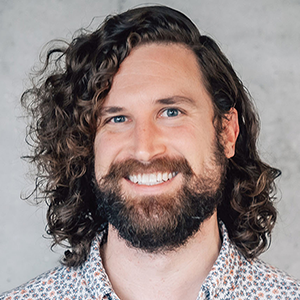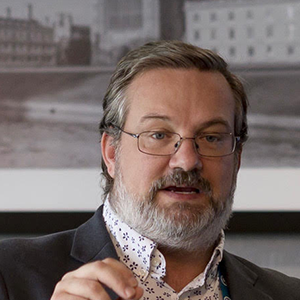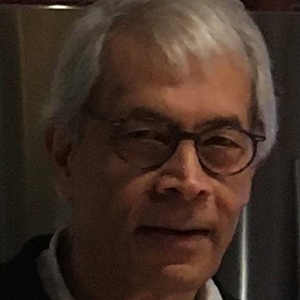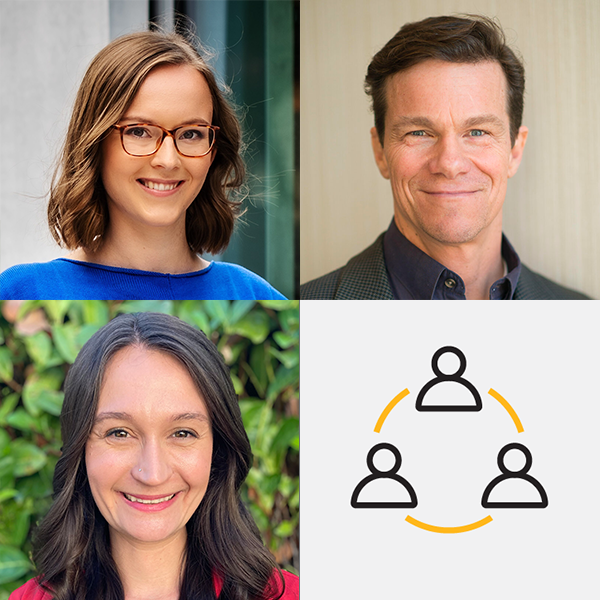What are you and your company doing to help reduce embodied carbon emissions?
Justin Schwarthoff
AIA LFA, Architect and embodied carbon research lead, LMN Architects
My journey towards sustainable design started the way that it must have for a lot of other architects—excitement over designs that embraced nature instead of trying to control it. Sustainability, at the time I began my career, was tied to operational energy use, and the most ambitious projects were these beautiful, daylit buildings that made use of “exotic” design strategies like rainwater capture and thermal mass. These buildings were full of life, their light changing with the day and their air feeling fresh. They were nothing like the poorly ventilated, florescent lit boxes I had grown up around. I was hooked.
Our understanding of sustainability has evolved immensely since the “early days,” and when the concept of carbon was introduced, it was a bit of a shock. Here was clearly the biggest challenge we face, yet embodied carbon emissions threatened to expose these previous sustainable designs as well-meaning follies. Could we afford to build high performing buildings, knowing that the materials in them carried so many emissions that may take decades to reclaim through operational carbon reductions? I had to know more.
In 2019, I began work with LMN as the Embodied Carbon Research Lead. We had limited understanding of our carbon impacts, but ambitiously aimed to run LCAs on each all of our projects in design and to target reductions in embodied carbon. We created an applied research team to study embodied carbon and mass timber, digging into the latest research and spreading what we learned through the firm and through the local CLF community hub that we organized. The more we learned, the more we expanded our scope, including the impacts of MEP systems, refrigerants, and landscape.
We found that in a typical LCA, reporting structure, enclosure, and some interiors, that over 50% of emissions may be ignored. We’ve since used this knowledge to foster the total carbon story of design, finding ways to balance different sources of carbon emissions to maximize the total reduction. It’s reopened the door for clever passive systems, but in a way that ensures that our designs are both beautiful and less impactful. As we look towards the future of our work, we’re pushing the research further with our Path to Zero Carbon series, seeking out what truly carbon negative, regenerative design can be.

Justin Schwartzhoff
“Our understanding of sustainability has evolved immensely since the ‘early days,’ and when the concept of carbon was introduced, it was a bit of a shock. Here was clearly the biggest challenge we face, yet embodied carbon emissions threatened to expose these previous sustainable designs as well-meaning follies.”
What are you and your organization doing to help reduce embodied carbon emissions?
Jessica Martinez
LEED® Green Associate™, Structural Sustainability Specialist – DCI Engineers
I’ve never known a world without climate change. The majority of my life has been spent in Houston and Austin, Texas so I’ve experienced my fair share of hurricanes, flooding, heat waves and ice storms. As a kid, I was always terrified during these events and would beg my parents to drive to another part of the state or country to get away. Once I got older, I realized there aren’t many regions that don’t experience any level of climate disasters and relocating to avoid these disasters is a privilege not many can even consider. This was also around the same time I learned there was no amount of reusable shopping bags or bamboo toilet paper rolls I could buy to alleviate these climate disasters – needless to say, I felt powerless.
After high school, I went to the University of Texas in Austin to study architectural engineering where I ultimately found myself in a class that revealed the immense impact the built environment has on the human experience. I was floored by the idea that I could be a part of this process and could potentially leave the world in a better place than I found it. At that time, I thought my best bet in becoming a part of building design was to capitalize on my love for math, jigsaw puzzles and Legos by becoming a structural engineer. I knew I wasn’t necessarily making the big moves that were shaping the human experience (besides my obvious contribution of ensuring the human experience isn’t ruined by the building falling down), but I was still an integral player in achieving that goal.
As time went on, I felt increasingly less passionate about my work and more of a bystander as I watched communities suffer from increasingly more frequent climate disasters happening across the world. Looking ahead, I thought the only way I could become more active in promoting the future of our planet was go back to school or get into politics. However, once I started learning about the impact embodied carbon has on the building industry’s carbon footprint and its contribution to global greenhouse gas emissions, I understood the undeniable opportunity structural engineers have to promote a more sustainable future.
Once I was fully committed to integrating sustainability into my practice at DCI Engineers, I began taking on increasingly more responsibilities to share this knowledge with my company. I took on the role of running our internal sustainability committee, which contains 30+ members and spans 22 offices, explored life cycle assessment software, researched impacts of material selection and structural design, developed embodied carbon focused specification language, and assisted with project sustainability goals—all while performing my typical duties as a structural project manager.
My company realized the available time I had for general project management was overshadowed by their commitment to the fast-growing pace of the sustainability movement. In recognizing the value of my passion and skills, DCI supported me as I shifted my priorities to focus on sustainability full-time and become the firm’s first Sustainability Specialist. Historically, DCI has been part of sustainable design movement with their work on Living Building Challenge, LEED, and various green pilot projects throughout the country. Coupled with a reputation to push the limits of the structural design process by exploring innovative materials and construction for their clients, the firm decided it was a no-brainer to shift me to this role as they went “all in” on their SE 2050 Commitment and mission to reduce embodied carbon.
In addition to pushing sustainability internally at DCI, I’m also actively involved with SE 2050, NCSEA and CLF to support the sustainability movement and provide embodied carbon leadership from the structural perspective. As I continuously look for opportunities to dive deeper into the rabbit hole of sustainability, I’ve realized it’s not just up to our world leaders to fix this problem—it’s our industry that can and will make real, impactful change!

Jessica Martinez
“After high school, I went to the University of Texas in Austin to study architectural engineering where I ultimately found myself in a class that revealed the immense impact the built environment has on the human experience. I was floored by the idea that I could be a part of this process and could potentially leave the world in a better place than I found it.”
What are you and your company doing to help reduce embodied carbon emissions?
Josh Jacobs
Director of Sustainability, WAP Sustainability
My story, my motivation behind addressing climate change, starts like many other origin stores, with loss. I adored tigers when I was very young. I dove in headfirst, learning everything I could and fell even deeper in love with them thanks to the story of a little boy and his stuffed tiger that filled me with laughter. I decided early on that I was going to study tigers in the wilds of India.
As I got older though, I quickly realized the harm we were doing to our world and in turn, to my beloved tigers. We were losing them. Let’s maybe skip over the fact that in college, laser-eye focused on getting my degree in zoology, they for some reason deemed multiple years of calculus necessary to follow in my hero, Jane Goodall’s, footsteps. Math and I weren’t/aren’t friends so I initially lost my dream, instead following a different career path that kept me involved with science and technology but strayed from my passion for the planet and all its inhabitants. I’m proud to say I made my way back, paving my way through marketing and public policy to a sustainability focused company. And I haven’t looked back.
I could tell you that I’m still motivated because of my long-held adoration for tigers…but that’s for the comic book origin story. The true reasons I wake up daily and go to sleep each night with a burning desire to find our way out of this climate crisis are my daughters. I look at them every day and have a sinking feeling in the pit of my stomach knowing what we’ve done and are doing to their world, a world they haven’t yet had a chance to fully experience. I fight because when all is said and done and I have nothing by my last breath to breathe, I have to be able to look at them and say – I tried. It all began with the tigers, but Zoey and Riley are the only motivation I need to make things better.
One of the main reasons I joined the team at WAP Sustainability was because they gave me the best chance to fulfill my motivation. Prior to joining WAP, I’d known about their excellent work in life cycle assessment and carbon accounting for about 10 years. WAP’s team has helped numerous authorities set up procurement policies that incorporate embodied carbon, along with drafting EPD language that kickstarted the embodied carbon conversation within North America.
Most importantly, WAP is a full-service sustainability consultant, ensuring that clients not only understand their corporate greenhouse gas emissions, their products’ embodied carbon, and the chemicals in their supply chain, but how they can do something about it. We tailor each conversation around what makes good business sense, hot-spotting issue areas and highlighting realistic ways that companies can cut their impacts. We’ve helped author GHG Protocol Sector Supplements for embodied carbon, we’ve led the USGBC LEED Steering Committee, and we have been part of numerous boards for organizations trying to make a difference. WAP focuses on true partnerships, facilitating ways that companies can do right by the planet and ALL of our kids on it.

Josh Jacobs
“The true reasons I wake up daily and go to sleep each night with a burning desire to find our way out of this climate crisis are my daughters. I look at them every day and have a sinking feeling in the pit of my stomach knowing what we’ve done and are doing to their world, a world they haven’t yet had a chance to fully experience.”
What are you and your company doing to help reduce embodied carbon emissions?
Ramesh Gulatee
Architect/NCARB, LifeCare Design Studio, LLC., Illinois
While studying architecture in India, we (faculty and students) went on an educational tour to Nepal, Sikkim and Tibet. The purpose of our excursion was to observe and learn from how these communities lived in harmony with wilderness in the Himalayan regions.
Upon arriving from New Delhi, India, a densely populated and smog-filled metropolis, we immediately felt and noticed the differences, including clear streams, blue skies, fresh mountain air, and little vehicular traffic. We were awestruck by the peacefully beautiful countryside.
After my graduation, I used a travel grant to study city planning and architecture in Italy. Italy is a heavily populated country, however I noticed many pedestrian-oriented cities with friendly people, open-air plazas, water fountains, working bell towers, public art, and beautiful buildings. Later, while living in Switzerland, I saw transit infrastructure, and innumerable instances of cities designed for people and not for automobiles.
Working in the USA for the last 20 years, I have been confronted in my design practice with the fact that the USA currently has more than 3.5 billion square feet of existing building space, and yet we keep on building more. Although most existing buildings appear to be in fair condition, they do present major sustainability challenges, including building enclosures, fossil fuel energy use, outdated and inefficient operating systems, and non-compliance with current building code standards for newer buildings. Yes, new building design and construction performs better due to updated codes, green certifications and newer technologies, yet it is still carbon intensive. The enormity of the current crisis tells us that we simply can’t build our way out of the climate challenge. However, existing buildings present an enormous potential for upgrades that avoid the embodied carbon emissions associated with new construction while dramatically improving their use of energy.
Recognizing the effects of the greenhouse gas emissions (GHG) associated with embodied carbon, and wishing to reduce our carbon footprint, we acquired, in 2005, an existing historic US Navy aviation training facility in Illinois and set out to repurpose the facility into a code compliant advocacy center for environmental sustainability and barrier free accessibility. Our firm intentionally practices environmental sustainability and accessibility design as essential concept layers in the formulation of projects.

Ramesh Gulatee
“After my graduation, I used a travel grant to study city planning and architecture in Italy. Italy is a heavily populated country, however I noticed many pedestrian-oriented cities with friendly people, open-air plazas, water fountains, working bell towers, public art, and beautiful buildings. Later, while living in Switzerland, I saw transit infrastructure, and innumerable instances of cities designed for people and not for automobiles.”







